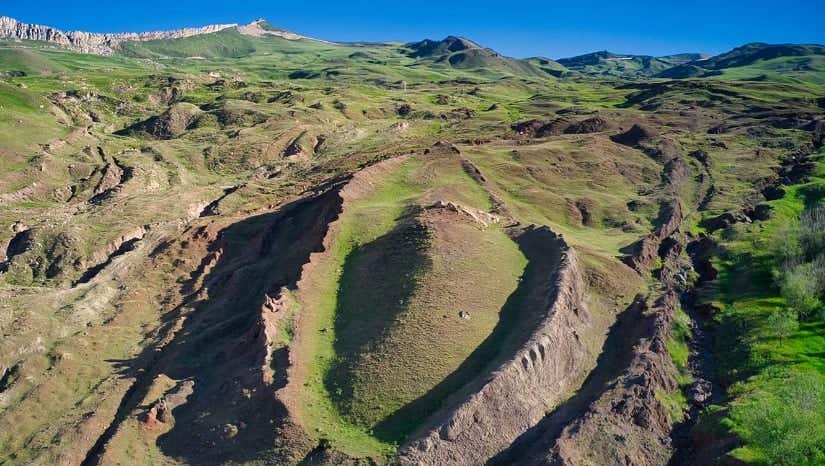Centuries-old mystery solved? Scientists believe they’ve found Noah’s Ark
The Bible’s Book of Genesis mentions that Noah’s Ark came to rest here after the global flood approximately 5,000 years ago.

These discoveries hint that the area was once submerged, strengthening theories that the site could be linked to the biblical vessel. (CREDIT: NoahsarkScans)
A team of researchers may have uncovered compelling evidence revealing the location of the legendary Noah’s Ark. This potential breakthrough centers on an ancient site in eastern Turkey, where findings suggest human activity between 5500 and 3000 BC.
Recent analysis of rock and soil samples revealed traces of clay-like materials, marine deposits, and even seafood remnants. These discoveries hint that the area was once submerged, strengthening theories that the site could be linked to the biblical vessel.
The findings, reported by the Turkish newspaper Hürriyet, have sparked renewed interest in the region’s history.
A collaboration of experts from three universities in Turkey and the U.S. has been leading this investigation. Since launching their research in 2021, the team has worked to unravel the mysteries surrounding the site.
The group, officially named the Mount Ararat and Noah’s Ark Research Team, was assembled specifically to conduct scientific studies on these ruins. Their work aims to separate myth from reality by examining the site’s geological and archaeological significance.
For those unfamiliar with the region, the site lies just under two miles from the Iran-Turkey border in the Doğubayazıt district of Ağrı.
Here, the Durupinar formation—a striking 538-foot geological structure composed of limonite—has long fascinated researchers and explorers alike. Its shape and size have led some to believe it could be the petrified remains of Noah’s Ark.
In a key phase of the project, scientists collected nearly 30 samples from the formation. These materials were then sent to Istanbul Technical University, where experts are now conducting detailed analysis.
Related Stories:
The results were astonishing. The age of the samples was determined to be between 3500 and 5000 years old, which coincides with the widely accepted timeline of the biblical flood.
Prof. Dr. Faruk Kaya, the Vice Rector of Agri Ibrahim Cecen University, elaborated on the findings. “According to the initial results, it's believed there were human activities in this region since the Chalcolithic period,” he said. This period spans from 5500 to 3000 BC.
Historical and Religious Significance
The Durupinar site’s significance is enhanced by its proximity to the Greater Mount Ararat summit – only 18 miles to the south. The Bible's Book of Genesis mentions that Noah’s Ark came to rest here after the global flood. This flood, according to the Bible, took place approximately 5,000 years ago.
The dimensions of the Durupinar formation are consistent with the biblical description of the Ark – "a length of three hundred cubits, its width fifty cubits, and its height thirty cubits."
The biblical account also recounts how God instructed Noah, then 600 years old, to construct the Ark and stock it with two of every animal species to survive the imminent global flood.
It's worth noting that not only Christianity but also Judaism and Islam reference the story of Noah and his Ark. However, the veracity of these tales remains a topic of debate among scientists.
Interestingly, the Durupinar formation wasn't a recent find. It was initially discovered by a Kurdish farmer in 1948. Later, in 1951, Turkish Army Captain Ilhan Durupinar identified the site while on a NATO mapping mission. This discovery was made public by the Noah’s Ark Scans project.
In a recent gathering, the 7th International Symposium on Mount Ararat and Noah’s Ark was held in the area. Speaking at the symposium, Prof. Dr. Kaya highlighted the significance of their findings. "An essential outcome of the symposium is the decision to conduct more research in Cudi and Ararat, known as the Mesopotamian region. Both are referenced in the Holy Quran and the Bible," he stated.
This discovery has the potential to reshape our understanding of one of the most famous tales in religious history.
While it's too early to say with certainty that this is indeed the final resting place of Noah’s Ark, the evidence suggests that the story might have a basis in reality. The world will undoubtedly watch with bated breath as further research unveils more about this intriguing site.
Note: Materials provided above by The Brighter Side of News. Content may be edited for style and length.
Like these kind of feel good stories? Get The Brighter Side of News' newsletter.
Joseph Shavit
Head Science News Writer | Communicating Innovation & Discovery
Based in Los Angeles, Joseph Shavit is an accomplished science journalist, head science news writer and co-founder at The Brighter Side of News, where he translates cutting-edge discoveries into compelling stories for a broad audience. With a strong background spanning science, business, product management, media leadership, and entrepreneurship, Joseph brings a unique perspective to science communication. His expertise allows him to uncover the intersection of technological advancements and market potential, shedding light on how groundbreaking research evolves into transformative products and industries.



